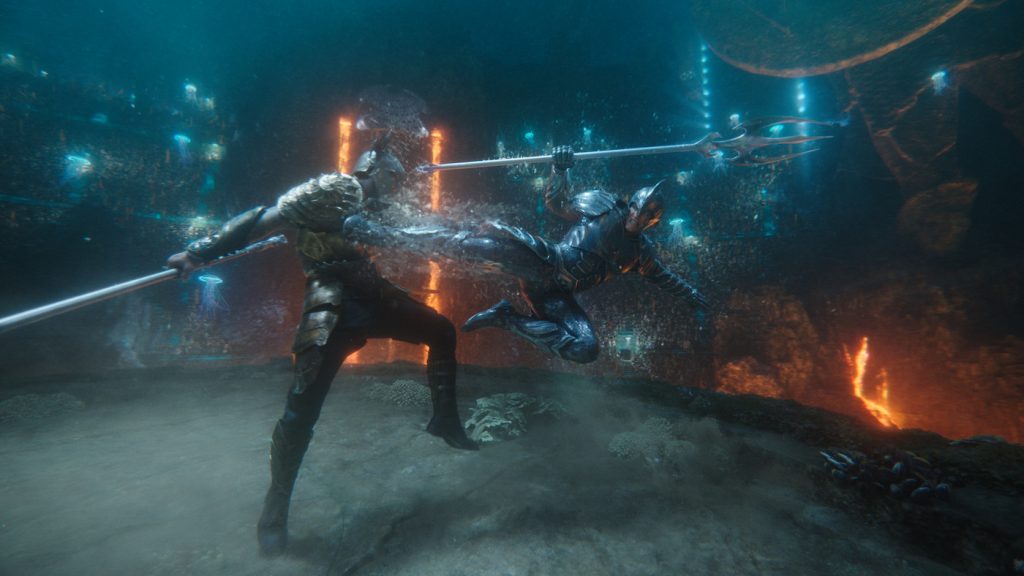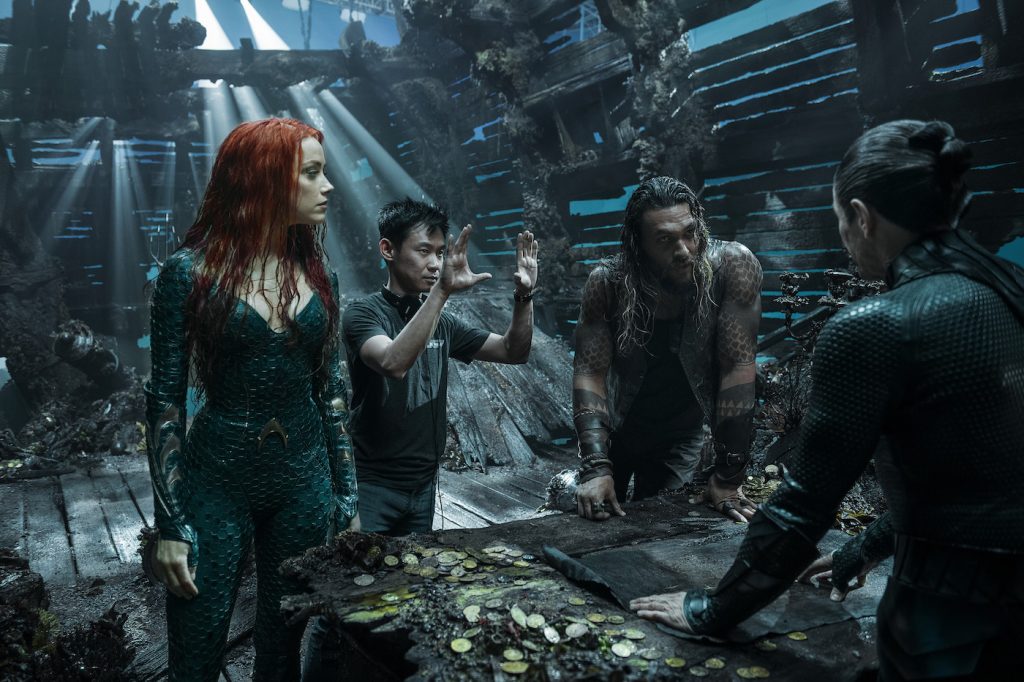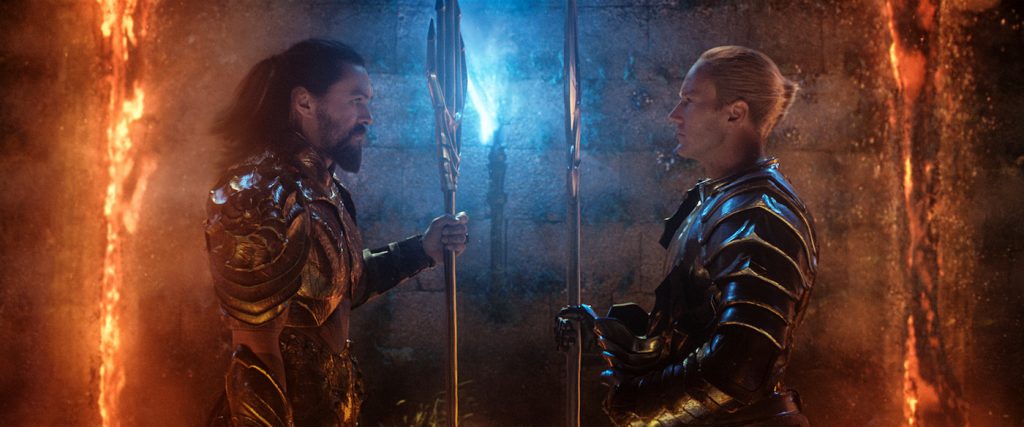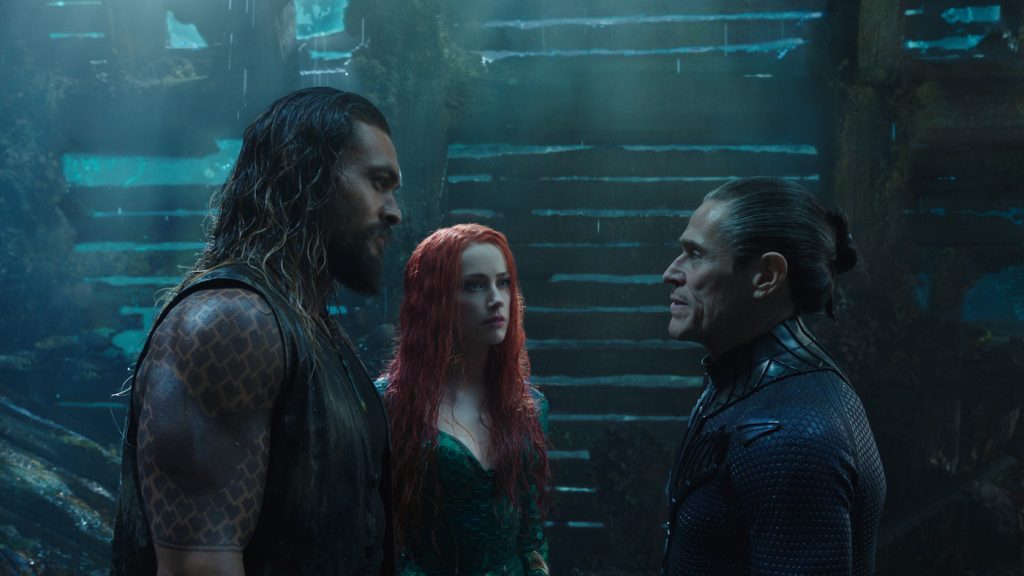Aquaman‘s DP on the Challenge of People Talking & Fighting Underwater
Of all the superheroes (and there are a lot of superheroes if you haven’t noticed), cinematographer Don Burgess was challenged to lens the one with the most problematic superpowers and origin story. Unlike Batman’s gritty Gotham, Superman’s soaring Metropolis or even Black Panther’s glorious Wakanda, there is no superhero who presents a tougher challenge to a filmmaker than Aquaman and his underwater kingdom of Atlantis.
“When When I met Sam Raimi to interview for Spider-Man, the first comic book that I’d ever read was on the coffee table in the waiting room to meet with him,” Burgess says. “So I didn’t go grow up reading comics, it was not my cup of tea. In fact, when I was shooting Conjuring 2 and James Wan decided that he liked working with me and asked me to do Aquaman, I said, ‘There’s really an Aquaman? I thought it was a made up deal from Entourage.’”
Ah yes, Aquaman’s ignoble turn on HBO’s Entourage. That series was about a young star (Adrian Grenier) making his moves in Hollywood, and he eventually lands a highly coveted superhero role, only the joke seems like it’s on him—he’s playing Aquaman. This is a character whose superpowers including talking to sea creatures and whose kingdom is literally at the bottom of the ocean. Yet once James Wan got involved in the real Hollywood’s first attempt at an Aquaman stand-alone with a fantastic cast led by Jason Momoa, any titters at the character’s attributes or setting died away. The result, once the massive Aquaman team plied their various talents, is a swashbuckling epic.
“What makes these projects interesting is that you kind of dive into them, no pun intended, to figure out your take on the material and what you think it’s about,” Burgess says. “Aquaman is a reluctant hero’s journey; I approached it from what this character is going through, and I try to put the audience in the principal character’s position. I get completely behind what that character is capable of doing and take it seriously.”
Burgess credits Tim Burton’s 1989 Batman as the original game-changer.
“We all grew up watching Batman and Superman on TV, and nobody took them seriously whatsoever. Then Tim Burton made the first Batman, and everyone went, ‘Wait a minute, this is fantastic.’”
But Batman fights villains on land, in a city, a place that, depending upon the director and production designer, resembles a pop-infused, Andy Warhol-inspired 1980s New York (Burton) or a sleek, menacing mega-city (Christopher Nolan). However Gotham is rendered, these are recognizable places operating more or less under the laws of physics and gravity and building codes and zoning. You don’t have to worry about Batman summoning a great white shark or having a conversation in a sea trench. You do in Atlantis, the kingdom Aquaman must return to in order to save both it and the world above.
“That’s challenge number one,” Burgess says. “There’s a practical side of filmmaking; they have to have dialogue and communicate underwater. The reality is we’ve got to come up with a dry-for-wet technique that sells the idea of them being underwater, but allows them to be able to actually give a performance. That’s the challenge.”

Burgess relied on the crack stunt and rigging team to help the actors look as if they were really performing—and fighting—underwater.
“It was a lot of people working really hard for a long time. Right down to the stunt people, the stunt coordinator, R.A. Rondel, the riggers, they created the actual physical movement and the devices we put on actors in to create fluid moment, so once a scene was blocked you could get them in and out so it felt like they were floating underwater and perform the scene.”
Burgess has been asked to do the nearly impossible many times before; he was at the vanguard of cutting edge film technology when he was the second unit cinematographer on Back to the Future Part II in 1989, all the way through his work on Forrest Gump, Contact, Spider-Man, and into his highest hurdle yet, Aquaman.
“If you look at my list of credits, I’ve been involved in a lot of groundbreaking visual effects movies. I’ve been fortunate to work with directors a step ahead of the technology at the time who forced us to pull off things,” he says. “I pride myself on having the ability to execute, to be able to figure out, ‘Okay fellas, how are we going to do this?’ We had a great team on this movie; production designer Bill Brzeski knew what he was doing from a creative and technical side. James laid out that vision in the first meeting and that’s the movie that’s up on that screen. There are very few guys who have the ability to do that; communicate this idea of what this audience needs to feel when they’re watching this movie. When you’ve got marching orders, you can bring what you know to that process and figure it out.”

While getting Aquaman off the ground—and into the ocean—asked a whole lot of very talented filmmakers to push themselves and their disparate techniques into new territory, Burgess had to remain committed to the cinematographer’s most important task.
“I’m focused on principal actors,” Burgess says. “I’m focused on the performance of the principal actor in the movie. I’m focused on Jason and Patrick [Wilson] and Amber [Heard] and Willem Dafoe—they’re going to be very engaged and do as much of that performance as they possibly can. They fight and train to do what you see in the movie. At a certain point, with the wide shots and things zipping around at superhuman speeds, they become CG characters, but everything you see, the primary beats, the emotional moments, you have to figure out how to get the principal actors into those moments and those beats, because that’s what the story is about.”

One of the things that will (hopefully) never change about movies is the power of the human face. No technology thus far created can match it; and we humans are drawn to each other’s faces, especially when they are projected onto a giant screen in a darkened theater.
“The cinematic grandeur of Aquaman is important, but ultimately you’ve got to get back to that close-up,” Burgess says. “How do we get Jason or Patrick or Amber into that moment? That’s what we’re doing every day. Intimacy. In the end, intimacy is the most important thing. No matter how big and exciting and grand something gets, after three minutes you’ll get bored if you’re not emotionally connected to the characters. It’s important for me to make sure the relationships pop—between the character and his environment, and the character with the other characters in the frame. You’re composing an image, and you’re deciding where you want the audience to be looking and how you want them to feel.”

Featured: Aquaman (Jason Momoa) fights Orm (Patrick Wilson). Photo Credit: Courtesy of Warner Bros. Pictures



